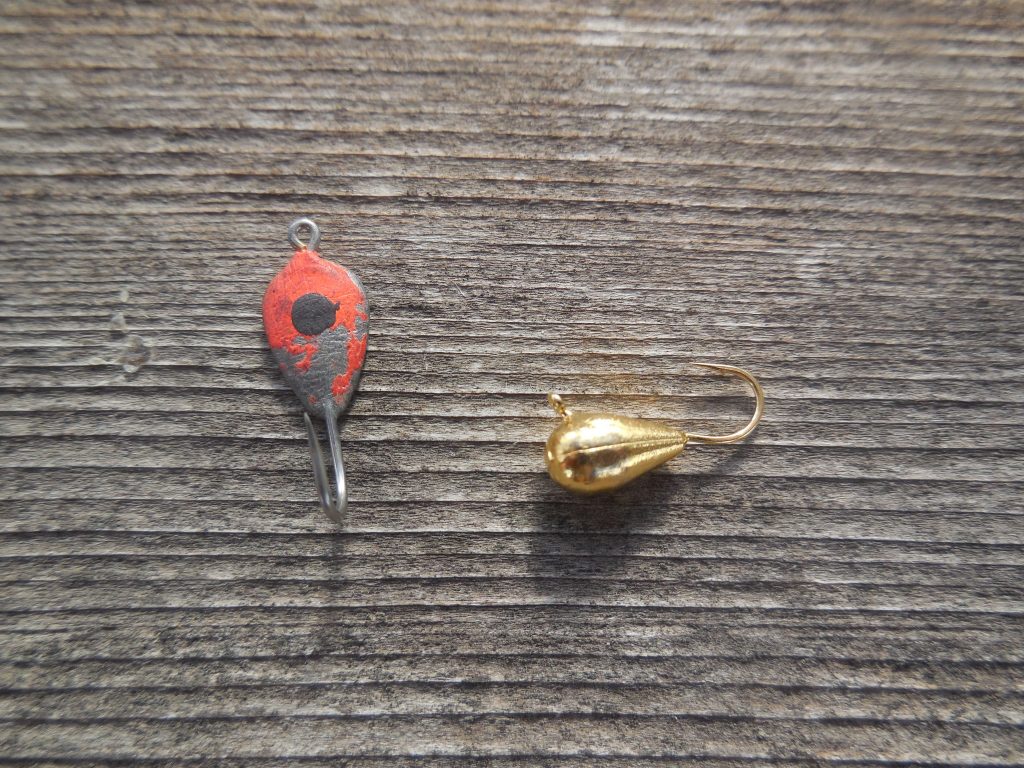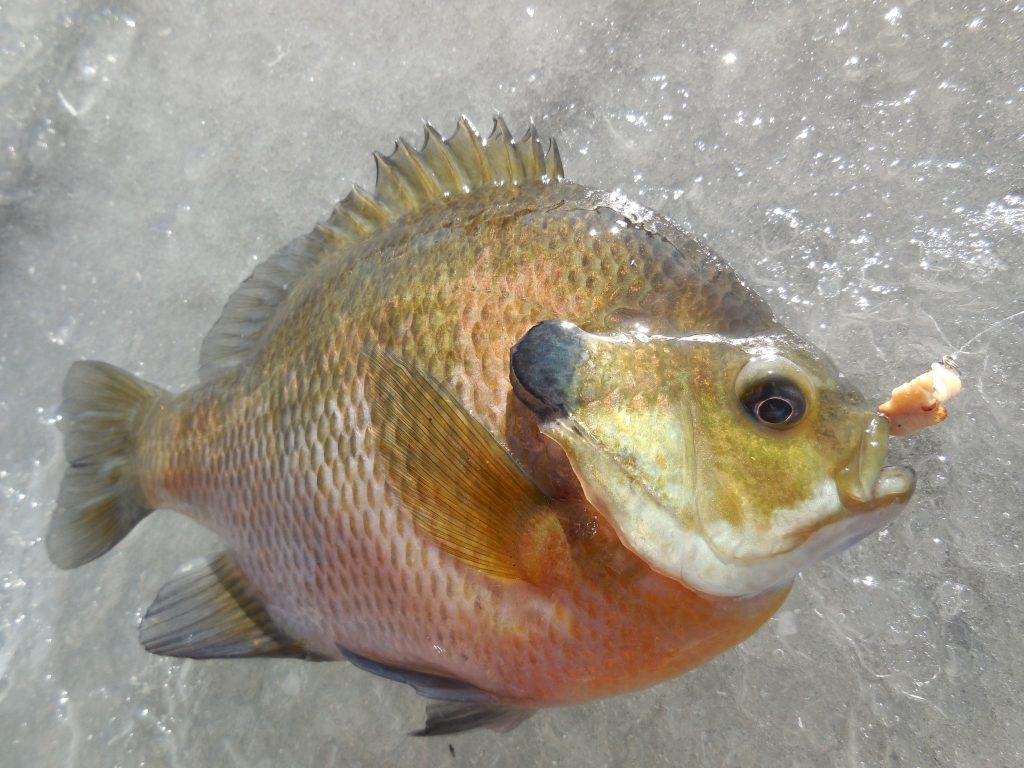The equipment advances on the ice-fishing front in the past decade or two have literally been mind-boggling. There is so much modern ice-fishing equipment available now that makes it a lot easier to ice-fish and makes us a lot more effective catching fish through the ice. It all works, they are all different tools for different jobs, the key is using the right tools.
A variety of small jigs have been the standard for catching panfish through the ice for a long, long time. Generically, “tear drops” have referred to a variety of those ice-fishing jigs, but there certainly are a variety of ice-fishing jigs that are not necessarily tear-drop shaped. By the way, here are some thoughts on why that tear-drop shape is so effective through the ice: Hang Time.
Regardless of the right size, style, and shape of ice-fishing jig for the situation, those jigs will almost always be tipped with some kind of body or bait. Again, the tipping options have exploded in recent years. It used to be that we would use some type of mousee, wax-worm or grub to tip our “tear drops”; now the options are limitless. In fact in some situations, the best thing to put on that jig may not be any kind of live bait at all. The best thing may be a plastic body of some type. Read through this to get an idea of what I am talking about:
Make sure you watch the video too:
Yes, those pieces are advertisements for a certain ice-fishing tackle company. By the way, you should be using their stuff, and others!
Let me add a few additional thoughts: First, yes, the tungsten jigs are excellent ice fishing tools. I know they are more expensive, but the higher density of those baits is a real asset in many ice-fishing situations. Not every jig I use through the ice is made of tungsten, I still use others, but those tungsten jigs do a lot of things really well on the ice. So, yes, they are worth the extra money. Buy ’em!
Secondly, I will tell you that in my open-water fishing I use live bait less and less all the time. I hate the hassle of live bait and in most situations it is not the only way fish can be caught. These days a person can do the same on ice–use live bait very little, if at all. The article and video promote the specialized, miniature, flexible, plastic bodies that are available in an infinite variety of shapes, sizes and colors. They work, and again I would tell you that if you are not using any plastics on your ice-fishing jigs yet, you should be. Here are some examples of what is available:
Custom Jigs and Spins Plastics
However, I will always tell you that there are no “sure things” when it comes to fishing. There is nothing guaranteed, nothing that works all the time, no magic baits that work in every situation. Yes, I use plastics on my ice-fishing jigs, but I AIN’T USING PLASTICS ALL THE TIME. In some situations, plastics are the way to go, but in other situations a wax-worm or maggots will work just as well or better.
It is very easy to carry a bait puck of wax worms or maggots while ice-fishing. They are live bait with very little hassle. For a lot of my ice-fishing, I am still threading a wax-worm on my jig, “tear drop”, and throwing it down the hole. I believe the wax worms or maggots are very effective because they offer some smell and taste that will trigger fish to bite. When do I use “meat” on my ice-fishing jigs, and when to I use the plastics?
Actually, I believe the plastics may be the best option when the fish are “off” and need teasing to get them to bite, especially in clear water. The key to using the plastics is to keep your jig moving all the time. You may pause briefly when you think a fish is going to inhale the jig, but even then you are probably better off to keep it quivering. The ice plastics are so small and so flexible that you can make them look alive; that is why they are so effective! I believe they work so well in clear water because panfish can be “near-sighted” when deciding whether to eat an ice jig–they will put your ice jig right on the end of their nose and sit there and stare at it. If you fish with a depth-finder in your hole, you know it is happening, and it will drive you nuts. They may stare at your jig for several minutes before inhaling it, or before backing off and swimming away (“AAArrrrggggghhhhhhhhhhh!!!!!”). If they are looking it over very carefully, it better look alive! Use plastics in those situations and keep ’em moving, make ’em believe, make ’em chase just a little bit, make ’em eat!
On the other hand, in darker water, panfish will still feed by sight, no doubt about that, but a bulkier presentation, and one that offers some scent, may work better. In those situations, a wax worm or several maggots on a jig hook may trigger more bites than the plastic bodies. When I am tipping with waxies or maggies, I am more likely to pause my jigging to give the fish a chance to move close and smell it. Then they want a taste, and then I am hooked up!
Of course the real answer to which is best is “it depends”, one of my favorite answers to a lot of questions. It depends on the day, the situation, depends on the fish. The best thing to do is experiment and let the fish tell you. Some days constant jigging is the only way to get bit and plastics or waxies may work equally well as long as you keep jigging. Other days, the fish are “on” and it ain’t gonna make a difference–get a bait down there, get a fish, repeat. However, in that situation, you can be more efficient using plastics and not having to re-bait. On the other hand, there may be days when you use maggots to get a little bit of movement from the maggots on the hook, and that may work better than the plastics.
Keep an open mind, experiment, see what the fish want, and see what you can learn from that! Have ’em all in your box and plan to use ’em all!
 Nebraskaland Magazine
Nebraskaland Magazine





